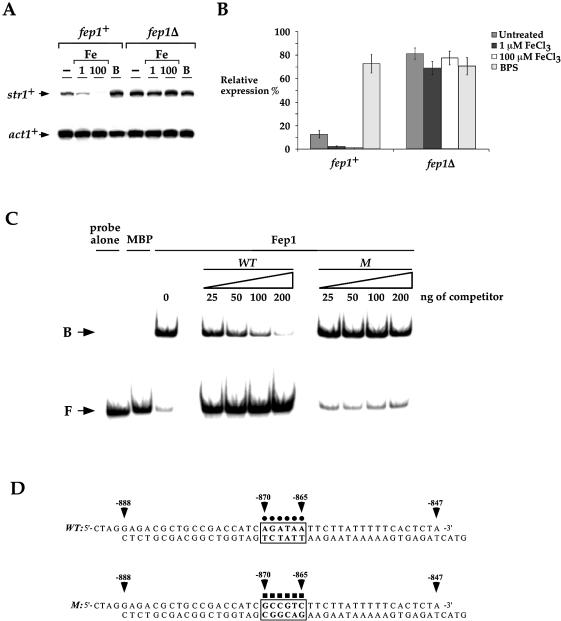Figure 4.
Down-regulation of str1+ in response to iron is controlled at the transcriptional level by the GATA factor Fep1. (A) The wild-type (fep1+) and isogenic fep1Δ strains were grown to mid-logarithmic phase in YES medium and subjected to control (–) or 1 and 100 µM FeCl3 (Fe) or 100 µM BPS (B) treatment at 30°C for 90 min. str1+ and act1+ (as a control) mRNA steady-state levels were analyzed by RNase protection assay. (B) Graphic representation of quantitation of three independent RNase protection assays, including the experiment shown in (A). Values are the averages of triplicate determinations ± SD. (C) Electrophoretic mobility shift analysis was carried out using chromatographic fractions prepared from E.coli cells expressing either the plasmid alone (MBP) or the MBP-fep1+ fusion allele (Fep1). Affinity purified Fep1 was incubated with 32P-labeled DNA fragment corresponding to the wild-type 5′-AGATAA-3′ element derived from the str1+ promoter. The amount of competitor used in each reaction is indicated over the lanes. The probe concentration was ∼1 ng/reaction. B, bound probe DNA; F, free probe DNA. (D) Sequences of the synthetic oligomers used. The box marked with dots indicates that the GATA element is wild type (WT), whereas the box marked with squares indicates that the GATA sequence contains six substitutions (M). The nucleotide numbers refer to the position relative to the A of the initiator codon of the str1+ ORF.

